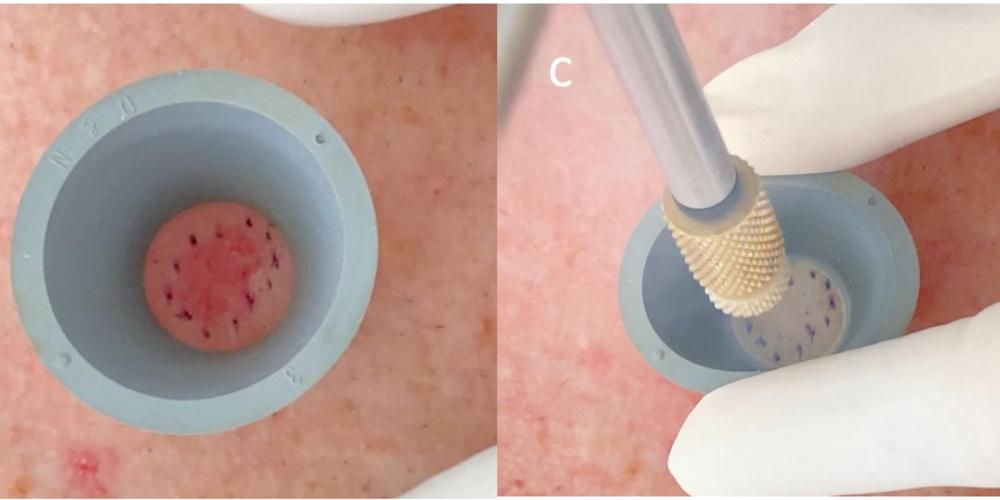
- Home
- Research
- Find research
- Eva Backman: Simplifying treatment for basal cell carcinoma
Eva Backman: Simplifying treatment for basal cell carcinoma
More and more people are affected by basal cell carcinoma (BCC), a type of skin cancer. How should this be managed with constrained healthcare budgets? Eva Backman’s doctoral thesis shows that there is a significant underreporting of tumors, and that simple destructive treatments can replace surgery in many cases.
EVA BACKMAN
Dissertation Defense: November 10, 2023
Doctoral Thesis: Basal cell carcinoma: real-life burden on healthcare and simplified destructive treatments
Research Area: Dermatology and Venereology
Sahlgrenska Academy, The Institute of Clinical Sciences
Basal cell carcinoma (BCC) is the most common cancer in humans. The number of new cases is steadily increasing. Sweden has a national register where all histologically confirmed cases are reported.
In 2021, over 69,000 new cases were reported in Sweden (an incidence rate of 670 per 100,000 person-years). However, many cases are also clinically diagnosed, without tissue sampling. According to Eva Backman’s research, the prevalence of BCC may be up to 70 percent higher than the official statistics.
“The majority of BCCs are small tumors that are easy to treat, but the high number of cases means that many people are affected, and a significant amount of healthcare resources are used for diagnosis and treatment. Because it’s such a common tumor, even small advances in research can make a difference. Investigating the underreporting was important to get a more accurate picture of the real burden and thereby address the problem correctly,” says Eva Backman, a dermatologist at Sahlgrenska University Hospital.
Simple destructive treatments
Surgery is considered standard treatment for BCC, even though topical treatment (creams and photodynamic therapy) and destructive treatments (curettage, cryosurgery and electrodesiccation in various combinations) can also be considered for so-called low-risk BCC.
Eva Backman’s doctoral project provides an updated view on destructive treatment of BCC.
“It felt important to strengthen the evidence for destructive treatments because they are simple, fast, and cost-effective. They can often be offered already at the first doctor’s visit. This can be particularly valuable for older and fragile patients, where surgery, for medical reasons, may sometimes be a less favorable option.”

Effective and safe alternative
Besides revealing a significant underreporting, what are the most important research findings, and what benefit can they offer?
“Our studies show that most clinically diagnosed BCCs are so-called low-risk BCCs, located on the body outside the head and neck region, and that destructive treatment methods, even with simplified treatment protocols, are effective and safe alternatives for a large number of these tumors. After one year, more than 95 percent are cured, but at the same time, longer follow-up (five years is planned) is important to assess whether the results withstand the test of time,” says Eva Backman, and continues:
“Our studies strengthen the evidence for destructive methods, as there have been a lack of randomized controlled trials, with standardized and transparent protocols, to support these methods. One of the studies is mentioned as a reference to support the recommendation of destructive treatment in the recently updated European treatment guidelines for BCC, which is encouraging.”
Why do you want to engage in research, and what motivates you?
“I enjoy seeking answers to questions that arise in clinical work, close to the patient. One driving force for me is also trying to make a small difference ‘where I stand’ and thereby possibly contribute to the development of healthcare.”
“In Sweden, we have publicly funded healthcare system, which feels important to protect. In this context, it is crucial that we, healthcare providers and decision-making politicians, choose wisely to get the most out of the available resources. Opting for destructive methods, with standardized protocols, instead of surgery for a significant portion of low-risk BCC, is, in my view, one such wise choice.”
Text: Jakob Lundberg
